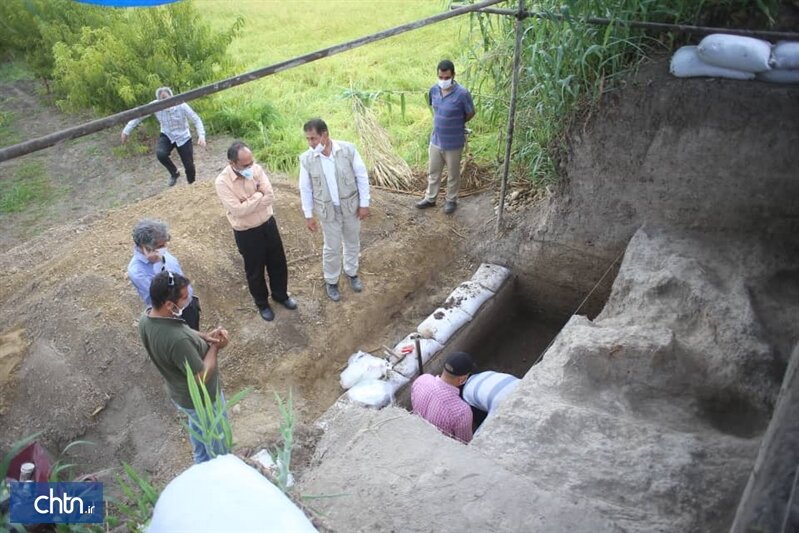Stratigraphy study reveals vestiges of Iron, Bronze, Copper, and Neolithic ages in northern Iran

TEHRAN – A recent stratigraphy study has revealed historical vestiges dating back to various eras of history including Iron Age, Bronze Age, Copper Age, and Neolithic era at Touq Tepe, a historic region in northern Mazandaran province, bordering the Caspian Sea.
“In this survey, vestiges and pottery fragments were identified that date back to the Iron Age, Bronze Age, Copper Age, Stone Age, and Neolithic era. However, the Neolithic-era potteries discovered in the site are of very high importance when it comes to prehistorical archaeological findings in the eastern side of Mazandaran province,” Iranian archaeologist Rahmat Abbasnejad, who led the survey, said on Saturday.
Two trenches were dug with the depth of over four meters into the [archaeological] hill (tepe) by the means of which the team could probe the evidence of various settlements through analyzing the stratigraphy [rock layers] of the site, the archaeologist explained.
Abbasnejad added attached great importance to the Neolithic-era layer identified in the site, which is situated in Neka county.
“The discovery of more than one meter of Neolithic-era layers in this excavation is a very important event in the shedding a new light on the history of the region in the Neolithic period. Such finding has been made for the first time in the plains of eastern Mazandaran in general and in the plain of Neka in particular.”
Neolithic, also called New Stone Age, the final stage of cultural evolution or technological development among prehistoric humans. It was characterized by stone tools shaped by polishing or grinding, dependence on domesticated plants or animals, settlement in permanent villages, and the appearance of such crafts as pottery and weaving. The Neolithic followed the Paleolithic Period, or the age of chipped-stone tools, and preceded the Bronze Age, or early period of metal tools.
AFM/MG
Leave a Comment